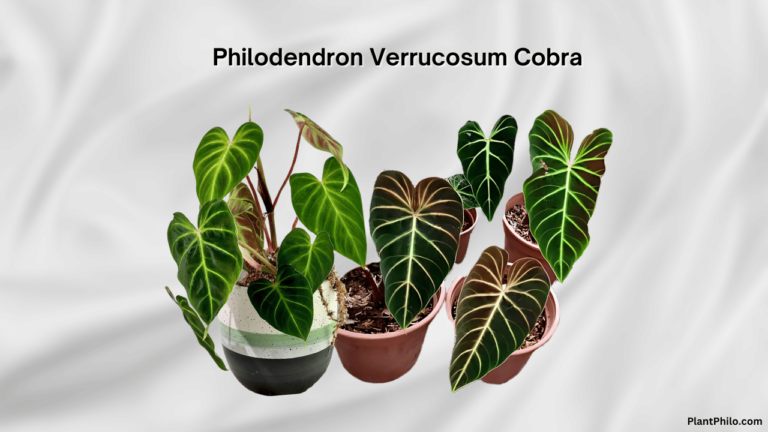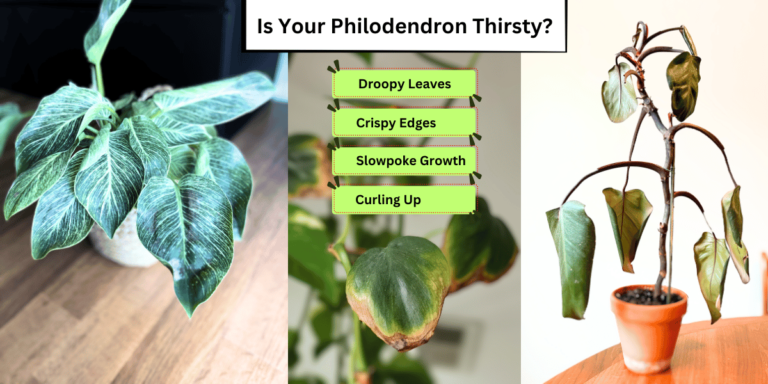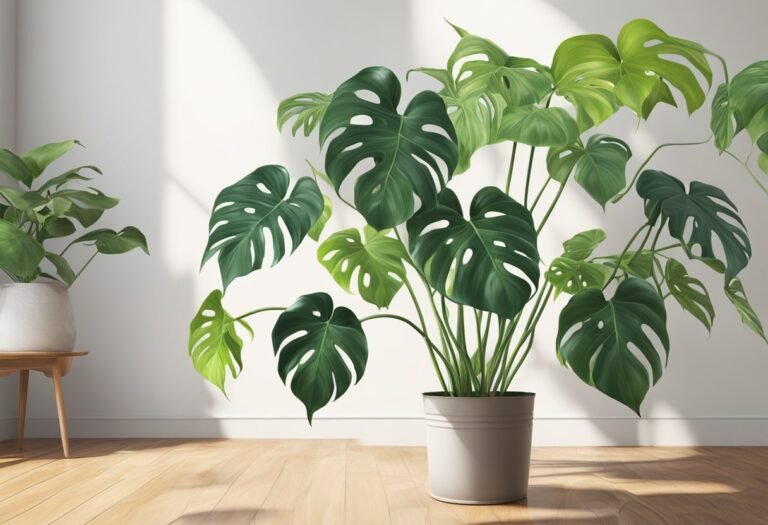Werneri Information on Philodendron: Key Care Facts and Growing Tips
Philodendron werneri is a unique climbing plant known for its lush, narrow leaves and love of warm, humid environments. Native to tropical regions, this species thrives in indirect or dappled light, much like the natural shaded areas of a forest understory.
I appreciate how it adapts well to indoor spaces if given the right care and attention.

What stands out about Philodendron werneri is its special ability to develop extrafloral nectaries, which can attract ants in the wild and help protect it from pests.
I find that rinsing the leaves regularly can prevent sticky residue from building up when grown indoors.
For anyone looking to add a rare and interesting plant to their collection, Philodendron werneri offers both beauty and fascinating features.
Overview of Philodendron werneri

Philodendron werneri is a climbing plant known for its compact growth and attractive leaves.
It stands out due to its care needs, appearance, and native environment.
Distinctive Characteristics
This plant usually has deep green, elongated leaves with a glossy surface.
The leaves often appear large compared to its compact size, making it a striking choice for indoor spaces.
I notice that Philodendron werneri produces extrafloral nectaries, which means it creates small amounts of sugar on its leaves.
In nature, these nectaries encourage ants to visit and help protect the plant from pests.
Indoors, this sugary buildup may appear as a sticky residue, so regular rinsing of the leaves is important.
The plant prefers bright, indirect light and will suffer if placed in direct sun, as its leaves can scorch easily.
For collectors, both standard and mini varieties are available.
Natural Habitat and Origin
I have learned that Philodendron werneri is native to the wet premontane forests of South America.
It is adapted to regions with high humidity, mild temperatures, and consistent moisture.
The humid and shaded forest environment suits this plant, as it typically climbs trees or other structures in search of filtered light.
Roots stay moist but not soggy, matching the damp forest floor conditions.
Because of these natural origins, Philodendron werneri responds well to similar conditions in cultivation, needing bright but indirect light and humidity to thrive.
Cultivation Requirements

I focus on giving my Philodendron werneri the best care by managing light, temperature, soil, and potting needs.
Proper conditions help the plant grow healthier and reduce the chances of stress or disease.
Light and Temperature Preferences
I keep my Philodendron werneri in a spot with bright, indirect sunlight.
This plant will suffer if placed in direct sun, as its leaves can scorch.
A curtain or shaded area near a window works best.
Temperature control is vital.
I maintain my indoor climate between 65°F and 80°F (18°C to 27°C).
When the temperature drops below this range, growth slows, and the plant may struggle.
Humidity above 60% is ideal, which I achieve using a humidifier or pebble tray.
I avoid exposing my plant to sudden temperature changes or drafts.
Stable, filtered light and warmth make it thrive.
More about these environmental needs is explained on platforms like the Greg App’s Philodendron werneri care overview.
Soil and Potting Mix
I use a well-draining potting mix to prevent root rot.
My preferred mix includes equal parts peat moss, perlite, and orchid bark to create a loose, airy structure.
Soil moisture matters a lot.
I keep the soil moist but not soggy by watering thoroughly, then letting the top inch dry before watering again.
Roots left standing in water quickly rot, so drainage is key.
To keep nutrients available, I fertilize every 4–6 weeks during the growing season with a balanced, water-soluble fertilizer at half strength.
Repotting every 1–2 years, or when roots outgrow the pot, keeps the plant healthy.
Specific care tips are outlined by sellers like Ecuagenera USA and guides from Gabriella Plants.
Care and Maintenance Tips
I focus on a routine that helps my Philodendron werneri grow strong and healthy.
Proper care—especially with water and fertilizer—helps this plant avoid most common problems and keeps the leaves looking their best.
Watering Practices
I check the soil before watering by sticking my finger about an inch deep into the pot.
If it feels dry, it’s time to water.
Overwatering can cause root rot, so good drainage is very important.
I use a pot with drainage holes and a well-draining soil mix.
I water with room-temperature water, making sure the entire root zone is moist but not soggy.
Letting water sit in the saucer can harm the roots.
Philodendron werneri prefers a regular but not frequent watering schedule.
For a small pot in average indoor conditions, I usually provide water every 7-10 days, but adjust depending on humidity and temperature.
Higher humidity may reduce the need for frequent watering.
Fertilization Guidance
I only fertilize when the plant is actively growing, usually spring through early fall.
Using a balanced liquid houseplant fertilizer, I dilute it to half the recommended strength.
I feed my Werneri about once a month when it’s growing.
If I see the leaves turning pale or growth slowing down, that may mean my plant needs more nutrients.
But I avoid over-fertilizing because this can damage the roots and cause leaf burn.
I keep a close eye for salt buildup on the soil surface.
If I notice a white crust, I flush the soil with water to remove excess salts before my next feeding.
Balanced nutrition helps keep the Philodendron’s leaves strong and healthy.
Challenges and Solutions
Philodendron werneri can face several obstacles related to pests, illnesses, and slow or abnormal growth.
I focus on actionable steps that help keep this plant healthy indoors.
Common Pests
I often notice pests on Philodendron werneri, especially when humidity is high.
The most frequent are spider mites, mealybugs, and aphids.
These insects can be found under leaves or in the crevices of new growth.
Signs include sticky residue, fine webbing, or yellow spots.
To control them, I inspect my plant weekly and wipe the leaves with a damp cloth.
If I spot pests, I use insecticidal soap or a diluted neem oil spray.
For larger infestations, removing damaged leaves or using a cotton swab dipped in rubbing alcohol helps target problem areas.
I’ve also learned that isolating a new or affected plant is important.
This stops the pests from spreading to my other plants at home.
| Pest | Sign | Action |
|---|---|---|
| Spider Mites | Webbing, spots | Neem oil, insecticidal soap |
| Aphids | Sticky residue, clusters | Wipe off, alcohol swab |
| Mealybugs | White cottony bumps | Remove by hand, soap spray |
Disease Prevention
Disease issues often show up if I overwater or use dirty tools.
Philodendron werneri is prone to root rot if its roots sit too long in soggy soil.
When I see yellow leaves or smell a musty odor from the pot, I carefully check the roots.
I always use well-draining soil and a pot with drainage holes.
Between waterings, I let the top inch of soil dry out.
I also sterilize my pruning scissors with alcohol before cutting, to avoid spreading bacteria or fungus.
If fungus appears on the leaves, I remove the affected parts and adjust my watering routine.
Increasing air flow around the plant lowers the risk of diseases taking hold.
For more about proper care and the plant’s natural preferences, this guide covers the basics.
Troubleshooting Growth Issues
Slow or misshapen growth can be frustrating.
From my experience, this usually connects to watering problems or poor soil.
Yellowing leaves and soggy roots point to too much water, while crisp tips and drooping signal underwatering.
I use a simple rule: keep the soil moist, not wet.
For Philodendron werneri, mimicking its natural habitat in wet premontane forests means a balance—moist roots but not standing water.
When the plant outgrows its pot, I repot using fresh soil.
Insufficient light may cause long, spindly stems.
I place my plant where it gets bright, indirect sunlight.
If growth remains slow despite care, I check for nutrient deficiencies and feed with a balanced liquid fertilizer every few weeks.
More information about its care and growth needs is discussed here.
Frequently Asked Questions
I focus on answering key questions about Philodendron care, appearance, and growing conditions.
I highlight what sets certain species and varieties apart, methods for successful propagation, and tips for healthy plants.
What are the care requirements for Philodendron gardeniodorum?
I recommend keeping Philodendron gardeniodorum in a spot with filtered light or partial shade.
The soil should be moist but well-draining to avoid root rot.
Regular watering is important, but I always let the top inch of soil dry out before watering again.
How does Philodendron pteropus differ from other Philodendron species?
Philodendron pteropus stands out because of its unique leaf shape and growth habit.
Unlike some other Philodendrons, it may need more humidity and indirect light.
Its features make it recognizable compared to more common species.
Are there any special considerations for cultivating Philodendron pteropus ‘Silver’?
I find that Philodendron pteropus ‘Silver’ grows best with stable humidity and mild temperatures.
The silver coloring can fade in low light, so I keep it in bright, indirect sunlight.
A well-draining potting mix can help prevent overwatering issues.
What are common propagation methods for Philodendrons?
I usually propagate Philodendrons using stem cuttings with at least one node.
I prefer water propagation or placing cuttings directly into soil.
Both ways work, as long as I keep the new cutting moist and in a warm area with plenty of indirect light.
How do you identify a Philodendron gardeniodorum from other Philodendron species?
I look for certain leaf shapes, size, and texture to identify Philodendron gardeniodorum.
The leaves are typically evergreen and often differ in shape from more familiar types.
Paying attention to leaf color and growth pattern also helps me confirm the species.
What are the ideal environmental conditions for growing healthy Philodendron plants?
I make sure my Philodendron plants get partial or dappled shade, since direct sun can damage the leaves.
Keeping the temperature above 30°F (about -1°C) is important, especially for varieties like those in zone 10a and above.
Consistent moisture and good air flow help prevent diseases and support strong growth.



